Category — Features
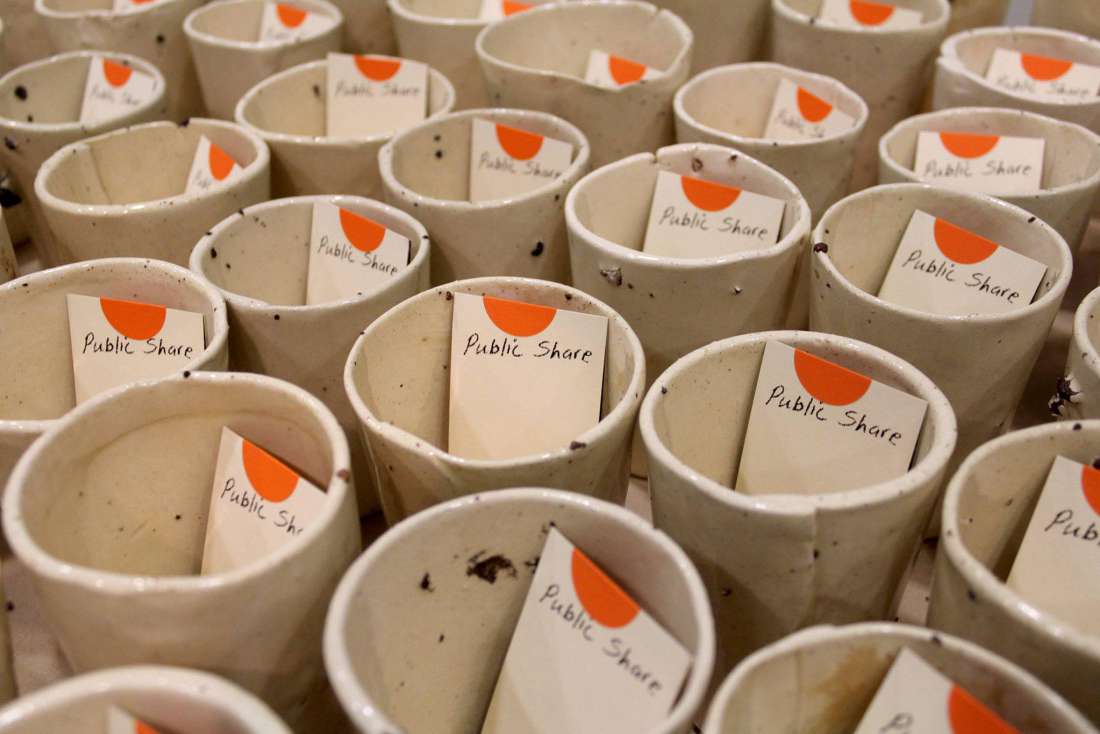
Public Share
Public Share is a collective of six New Zealand artists working together to engage in ideas of production, sharing and exchange. Public Share make objects with site specific clay which they then share in events designed to punctuate the day with pause, reflection and conversation.
I talked to Monique Redmond, Harriet Stockman, Kelsey Stankovich, Deborah Rundle, Mark Schroder and Joe Prisk and this is a transcript of a conversation resonant with all of their voices.
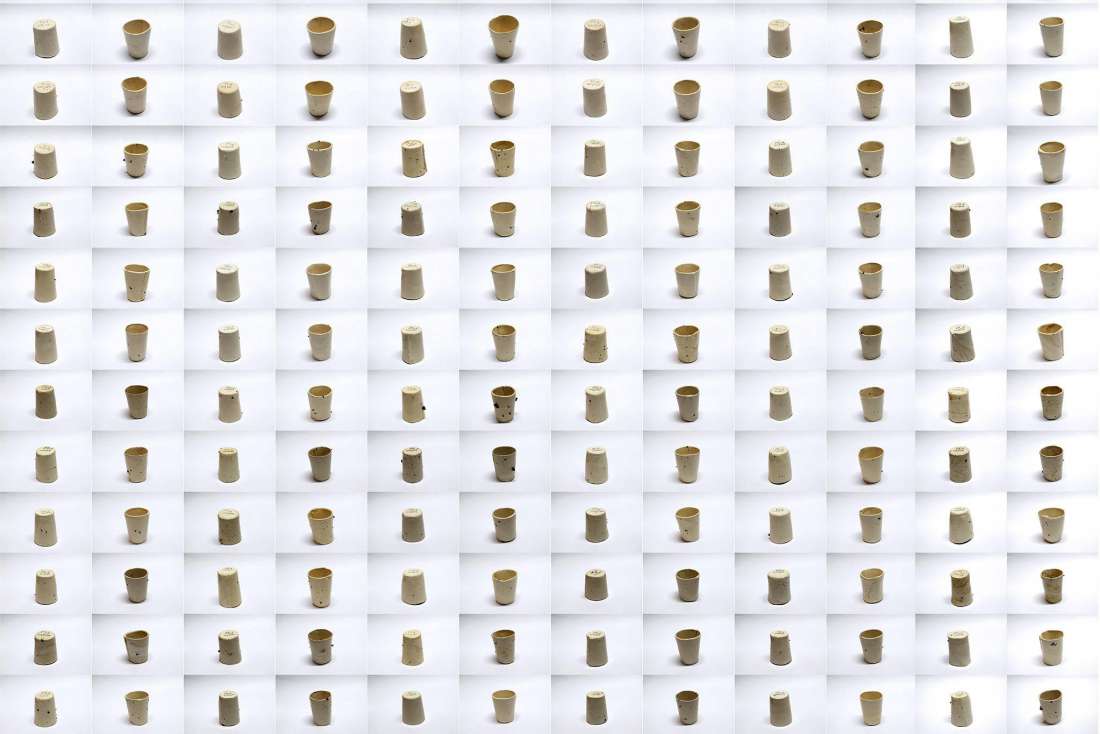
SSS – How did you all come together to form Public Share?
It came out of the Engaging Publics/Public Engagement Symposium at Auckland Art Gallery in 2014. They invited papers for the symposium, and we had an interest in doing a work that focused on an event rather than a formal presentation. So we assembled as a group of seven artists – at that time Kirsten Dryburgh was also a member. We were interested in forming a collective around ideas of making and sharing. The symposium focused on social, participatory and temporary public art practices. Our event was A break in proceedings, which took place during the morning tea break.
SSS – So the Engaging Public Symposium spawned an idea around which you formed, and that was ALLOTTED BREAK(S) and Irregular allotments?
ALLOTTED BREAK(S) is the main title and the project has two parts, A break in proceedings and Irregular allotments. We all know each other through some connection to art school, AUT and exhibitions and collaborative endeavours we’ve been in together. So we had some experience of working together as well as enjoying each other’s company and each other’s thinking around art and making and some of the values that might work well in a collective situation. Thus we sort of knew we’d be able to come together as a group of people and work on a project – although it turned out to be a number of ‘projects’! – with some good synergies between us.
SSS – Did you congregate specifically around pottery?
Not really, more around cooperative making and an interest in materiality. We are all artists who work in sculpture, installation, painting or conceptual art. It’s Harriet who has a big history with clay – she had already been making things from Te Atatu Peninsula clay – but we all have an attachment to object making. This opportunity came up, and we knew everyone would be generous. It really requires a generosity of spirit to invest the time, access the material, make the objects, then disseminate them through some sort of social event.
SSS – And it immediately involved the concepts of gifting.
Yeah. Well… we want to avoid the word ‘gifting’. Sharing seems more appropriate. Gifting comes with connotations of… the gift economy. Exchange is another word we’ll use often, exchange and sharing and reciprocity.
SSS – So after the first morning tea at the gallery?
We returned to the Fulton Hogan site where the clay had been collected from for Irregular allotments, which was part two of ALLOTTED BREAK(S). We held a large morning tea/smoko break with all the staff on site that day. When we were thinking about it as a concept, the project always had two parts to it, a sharing with both publics. At the gallery there were five different plate designs, but the Fulton Hogan workers asked for mugs. As it evolved we began to develop ideas around the symbolic and real practice of pausing for a break. At the same time legislative changes were coming through New Zealand, with workers no longer having an absolute entitlement to two 10-minute tea breaks in the working day. After being a long-established right, a break has become something that needs to be ‘freely’ negotiated, so smoko is a nice way to look at those issues through a gentle social exchange. It wasn’t until we held the first event that we got onto mugs and then the tea break became an integral part of what we did, and gave the basis for the project SMOKO.
SSS – And so that’s at the core of SMOKO, where you seem actively engaged in the politics of workers’ rights?
We were taking the 10-minute tea break across the ditch to Melbourne to a performance symposium, Performing Mobilities. People could easily participate in it and not necessarily have that to the fore of their engagement, but participate in whatever way they felt like. At the first blush it’s a social exchange and a material exploration.
SSS – And next, Carried Forward?
Yes, Carried Forward was our third project. It was for the ST PAUL St Curatorial Symposium, at the Auckland Art Gallery. The idea was that at registration people collected a cup, used it for a tea or coffee and then we had a station where we washed and put them into paper bags for relocation to the next ‘break’ space, the outdoor amphitheatre where we had a shared lunch consisting of soup and bread. People ‘carried forward’ their tumblers to the second event and then away to their homes or workplaces. There were a lot of people in the curatorial symposium from all over the world and our idea was that they would have something to take back with them.
SSS – Were you trying to talk about disposability?
It was a response to some of the themes of the Curatorial Symposium and us wanting to give something that had an ongoing life… and replace the horrible polystyrene cups you get at a symposium. That’s where the whole discussion around the tea stirrer came up, as an object that is used in process. We ended up making a large number of stirrers, which mimicked the ubiquitous plastic or wooden stirrer found at conferences, and which we dispensed under the project title A Right Stirrer at the Whau Arts Festival 2015. We set up a tea station in a shipping container and encouraged people to help themselves to a cup and a stirrer as and when they wished, which they could then take away with them. The way that we received the clay for the stirrer was interesting as well. Fulton Hogan came to us because they had encountered a seam of clay and one of the guys had said “Oh, those pottery people might be interested in this”… that was quite a thrill for us. Given that they’ve got a job to do, it’s really generous of Fulton Hogan.
SSS – Does that go up the chain of command or is it the guys that you were serving the tea to that have remembered you?
Both, actually, but it was definitely the guys on the diggers that pointed out that clay. They went back to Scott their site manager who then came back to us.
SSS – All of these things seem to revolve around pause and sharing moments and then more explicitly in the workplace. Have you found that the workplaces that you’ve engaged with have celebrated that moment with you, are they receptive? Fulton Hogan obviously were.
Generally they are. We were in Christchurch last week for Conditions Subsequent – one place was more formally organised but the other, when we organised the event we had said it would be a 10 to 20-minute break, but two hours later we were still there and being given a tour around the site.
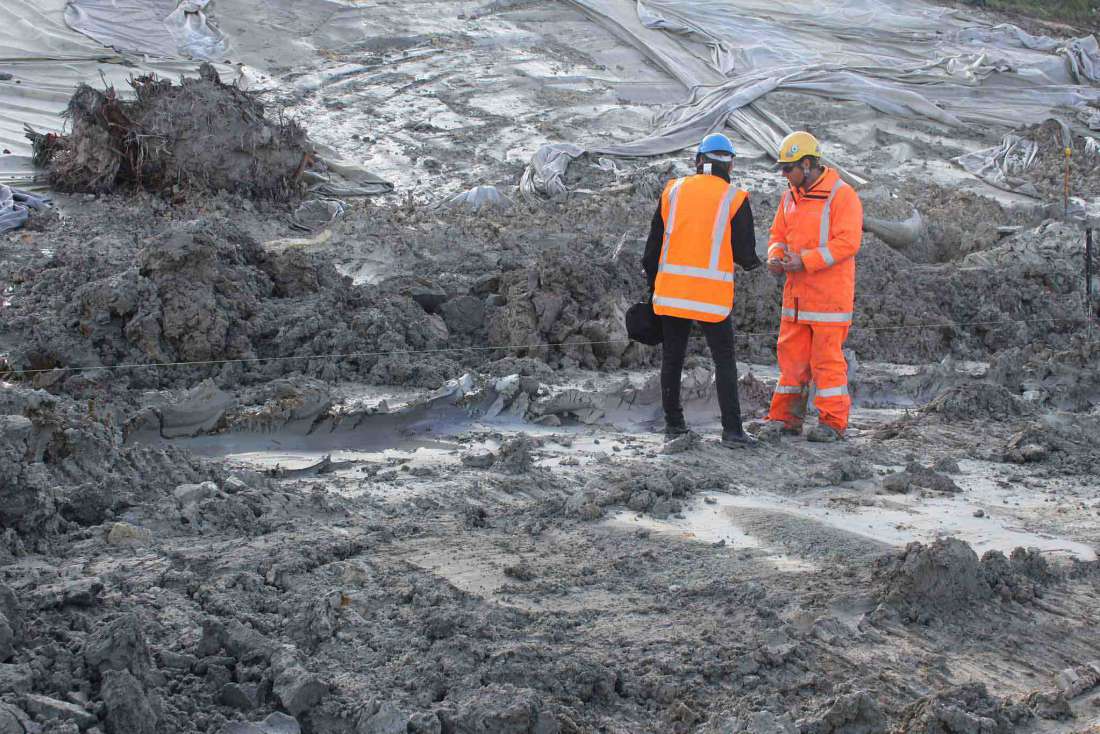
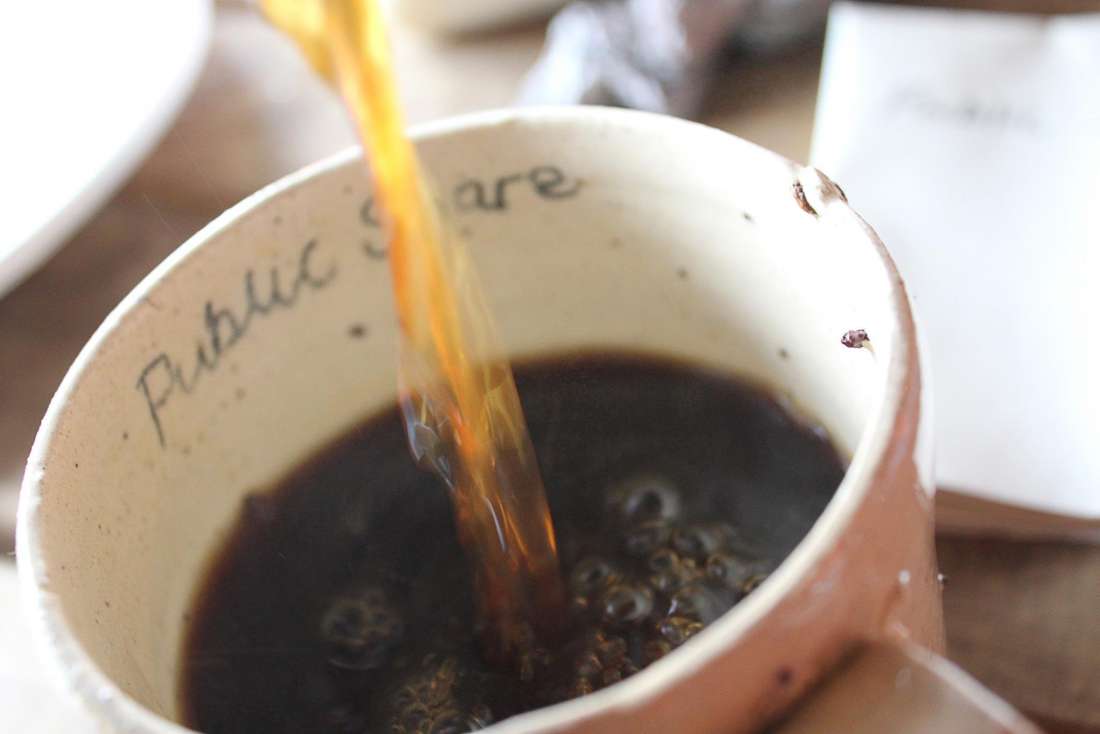
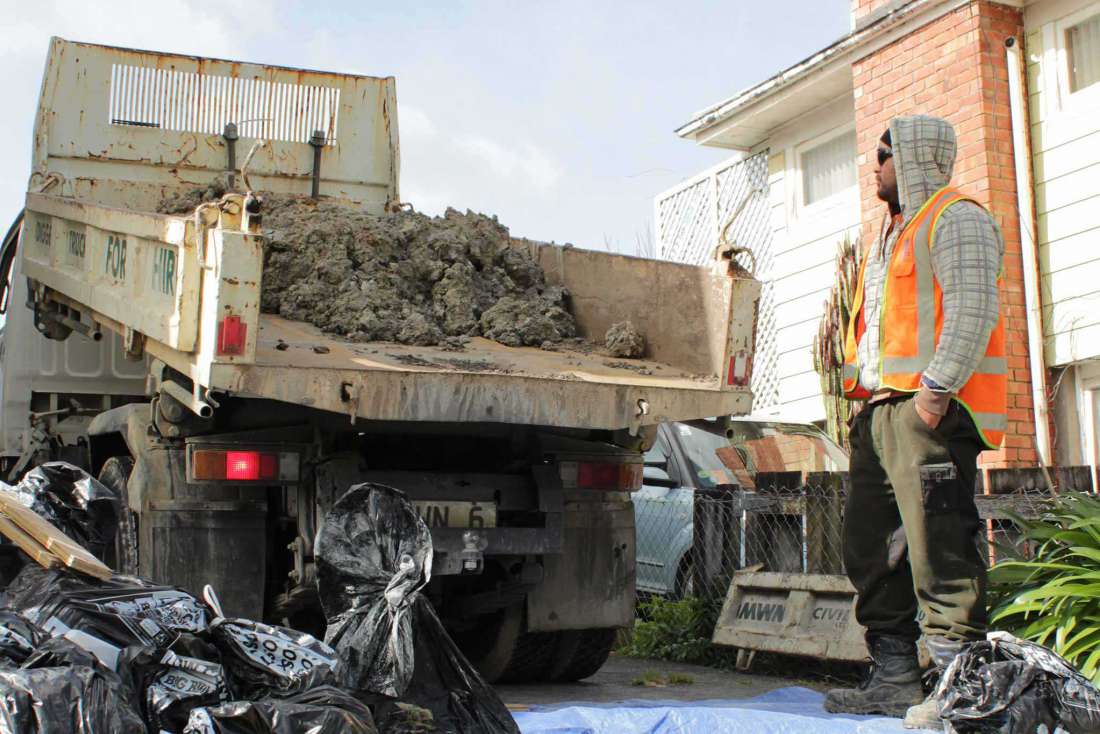
SSS – And that was Conditions Subsequent, which seeks to look at urban development in Christchurch?
The curator for that exhibition, Vera Mey, was particularly interested in notions of urban renewal, testing what happens to unsettled communities and displacements and the sorts of things that do not fit with the aspirational, and are not necessarily positive… we all know that Christchurch has had a really mixed experience post earthquake in regard to what’s happened in the built environment and in terms of the people living there. Our place in that was to visit sites that were in the process of renewal and to collect soil and clay samples to bring back to make what we call tea tumblers. They were very small, quite a different shape in comparison to the larger worker’s tea mug and echoing some of the handleless and diminutive tea-drinking vessels from Asia.
SSS – Gifting our time and the things we produce with our labour is at odds with the prevailing paradigm, yet central to what you’re doing in engaging us in acts of sharing. Do you think we benefit as a society by engaging more like this?
Yes, it’s like a political act in its own right, giving things away. And it starts its own conversation. Stopping work first of all and then giving something away for free that you’ve spent hours making. We have quite a lot of conversation about that, for some people it’s kind of a weird thing. “We just want to give you this” and they’re like… “what?”
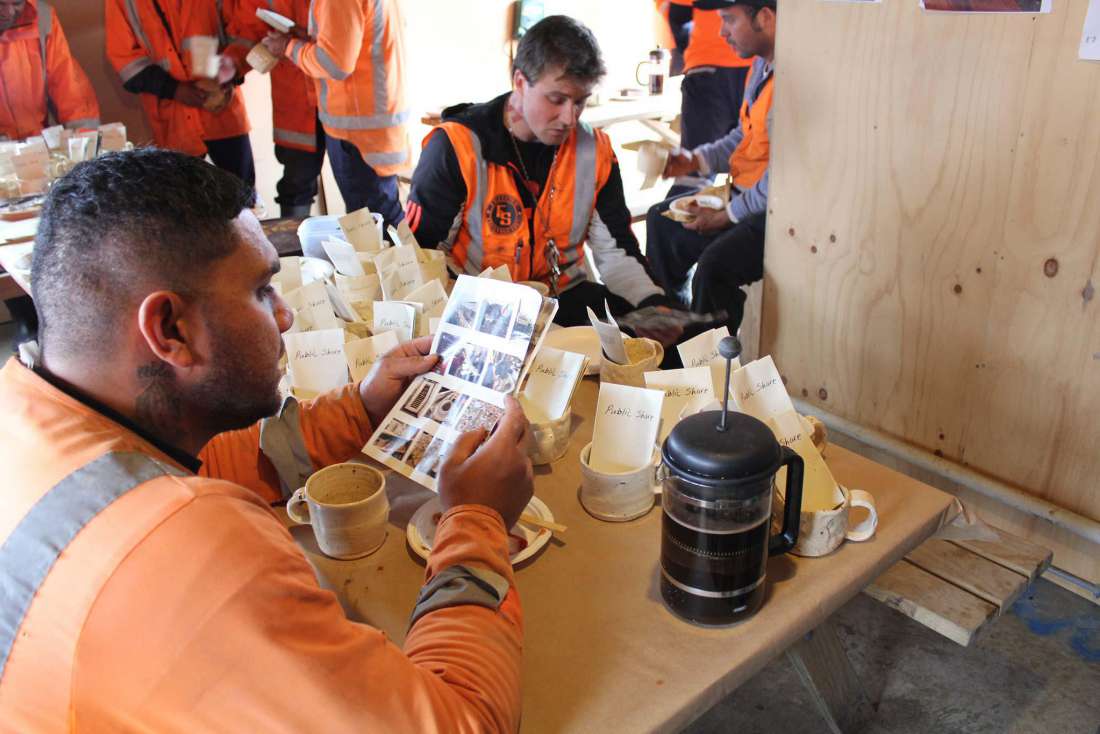
SSS – Conversations with the workers that you’re engaging in?
There are varied conversations with the workers. At Irregular allotments we had a lot of conversation based around the bigger idea of what we are actually doing, we heard lots of stories to do with people’s experiences with clay objects or with tea breaks. In Christchurch with Conditions Subsequent, we had funny conversations about how small the teacups were, but there was also a real interest in where the clay came from. That seemed to be a really pivotal point for everyone.
We don’t really think of it as gifting, we think about it as shared appreciation. These objects that we make, we really like them! When we’ve got a table laid with them all, we’re always really pleased with them… visually, aesthetically… Objects made with clay which represent a site. And you put them out and they’re beautiful – we want people to appreciate them and they do. There is a happy factor going on for sure, it brings up all these conversations which do sometimes locate the discussion into the more political and sometimes into other stories.
SSS – Plates, cups, mugs – they revolve around a pause in the day, like you’ve said, but also around food, which is something else that we share.
Yes, we always make the food that is shared at each event, except for the gingernuts. Griffins made the gingernuts! For Whau Arts Festival, we wanted it to be about the tea. The ‘tea cup’ was compostable and sourced from Innocent Packaging and our stirrer went with it. The title of the event, A Right Stirrer, alludes to the idea that when people come together and pause and talk, all sorts of conversations happen and some of those can be quite stirring conversations. Particularly, in terms of connections people make – and the thing that happens differently when you have a shared break from when you have an individualised break, sneaked at your table or stolen during the day, which is how a lot of people actually experience tea breaks now. They finally get a chance to do it, but at the same time they’re working at their desk, or driving to the next appointment.
SSS – You talked about the discussions that emerge, and it stands to reason that if you’re in an art event in the Auckland Art Gallery that there’s going to be some comprehension of the higher ideals of what you’re doing… does that filter through with the guys where the clay comes from in their high-vis vests drinking a mug of tea?
It’s quite a similar conversation. They really are interested in talking about it all – the process, the site, the clay and the making, which we really appreciate. The other thing that happened that was really nice when we were out at the Fulton Hogan site… quite a lot of people asked if they could have two, they wanted to take one home for their partner. That was lovely, we hadn’t anticipated that.
SSS – Extending the sharing…
Yes, at that point we wondered whether people might go “they’re a bit weird”, but they haven’t done that. They’ve been interested and both enjoyed and wanted the objects. It’s maybe also that it’s a souvenir. Like a memento of their own work… they get a cup that came from the site of the motorway that they built.
SSS – Are there many art projects that revolve around sharing?
Yes, there are. Socially engaged art practice is an expanding field, lots of people making and sharing in different ways. There’s a common desire to think about how you create situations or communities for people to participate in. Something which is particular to us is an interest in generating these material objects and the production. We spent all year last year making SMOKO, it was then disseminated in 20 minutes. We came in, installed, they had their morning tea, they left and all of the cups were gone. There’s something quite wonderful about this idea that this energy is then stretched out, its dispersal takes on another life, and we get to see these objects elsewhere… in people’s homes. Like when we were in Christchurch, the director, Mel, had been at the ST PAUL St Curatorial Symposium and had a tumbler sitting in their kitchen, a well-used tumbler too. There are definitely some nice overlaps.
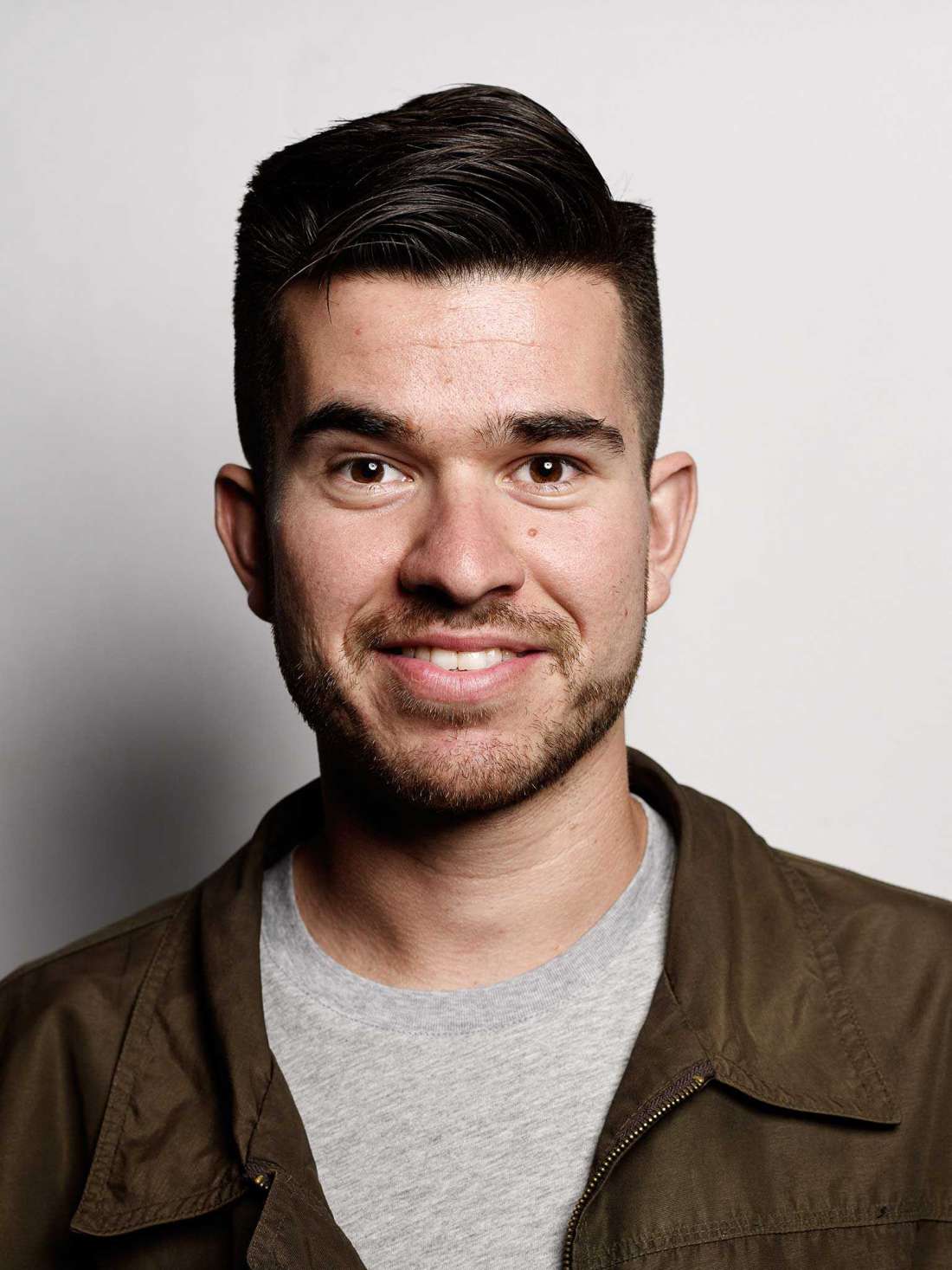
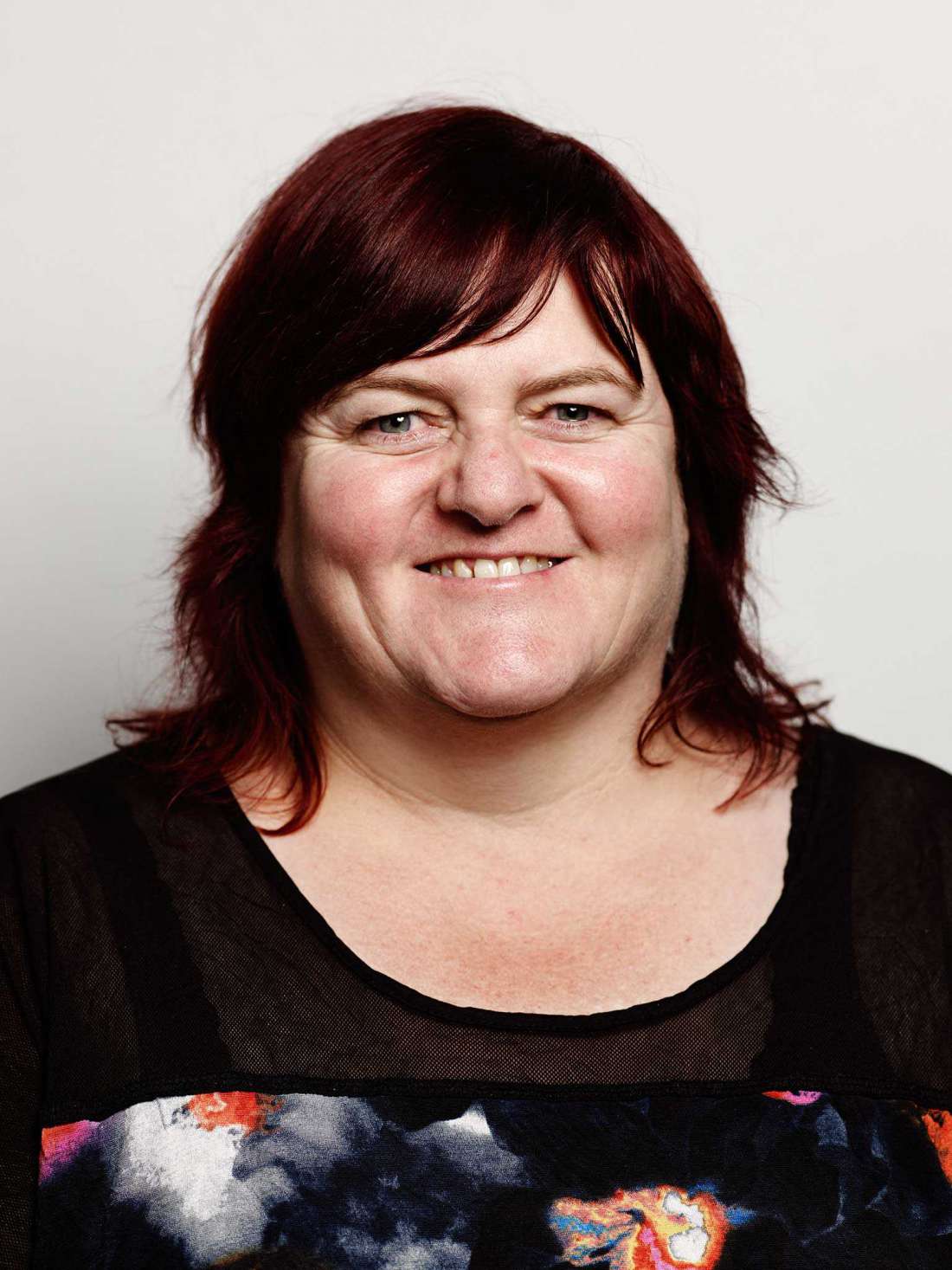
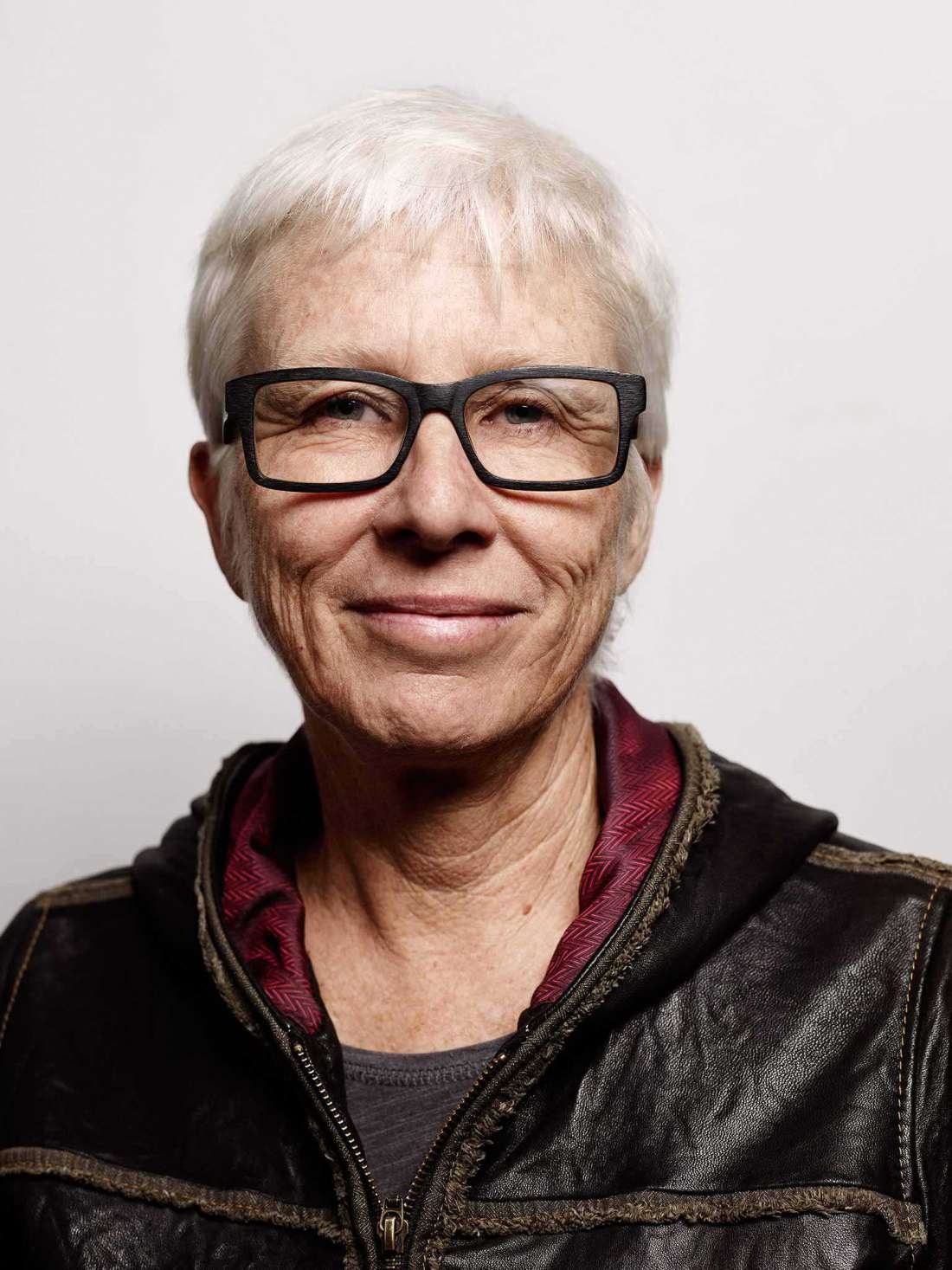
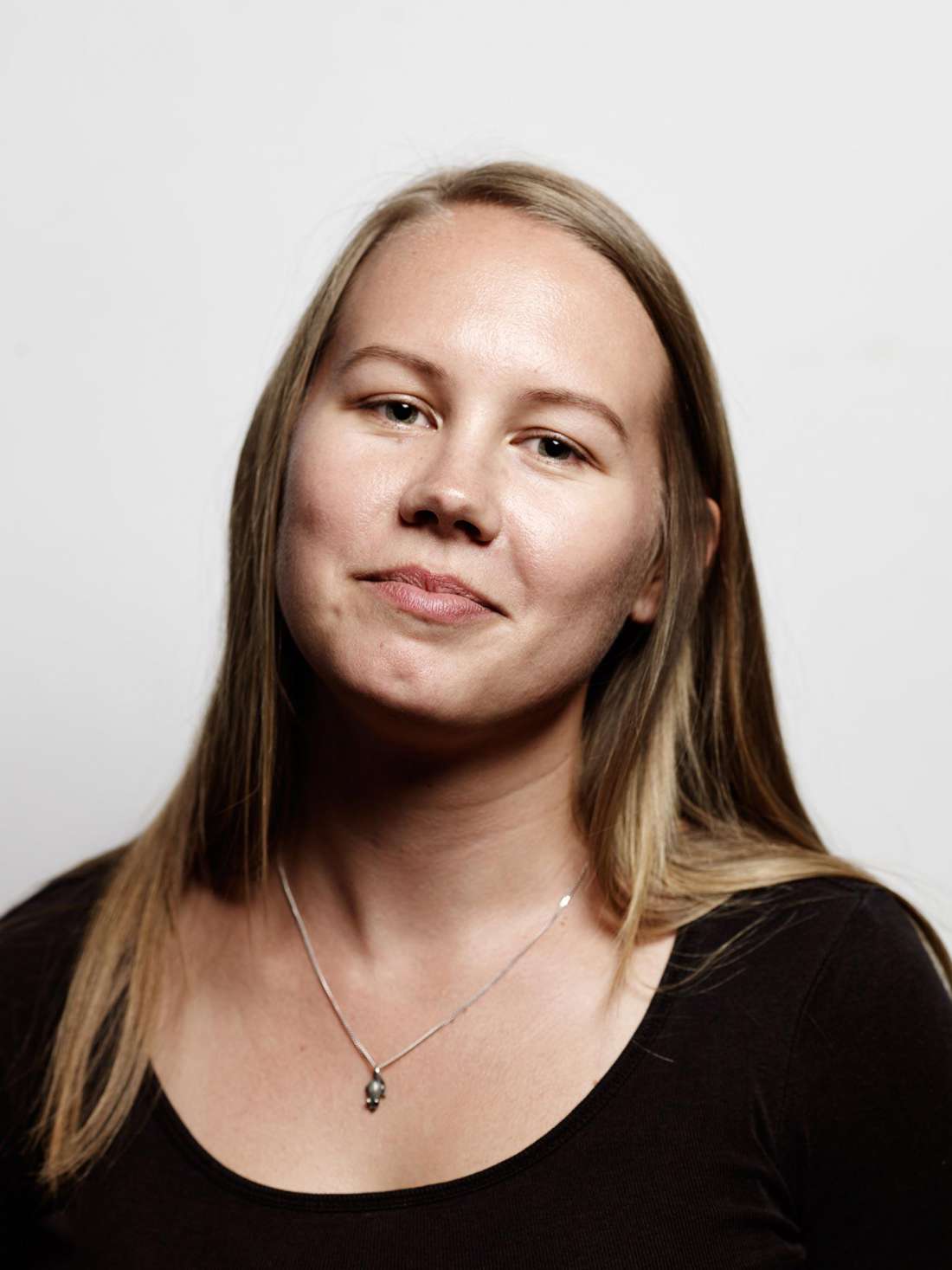
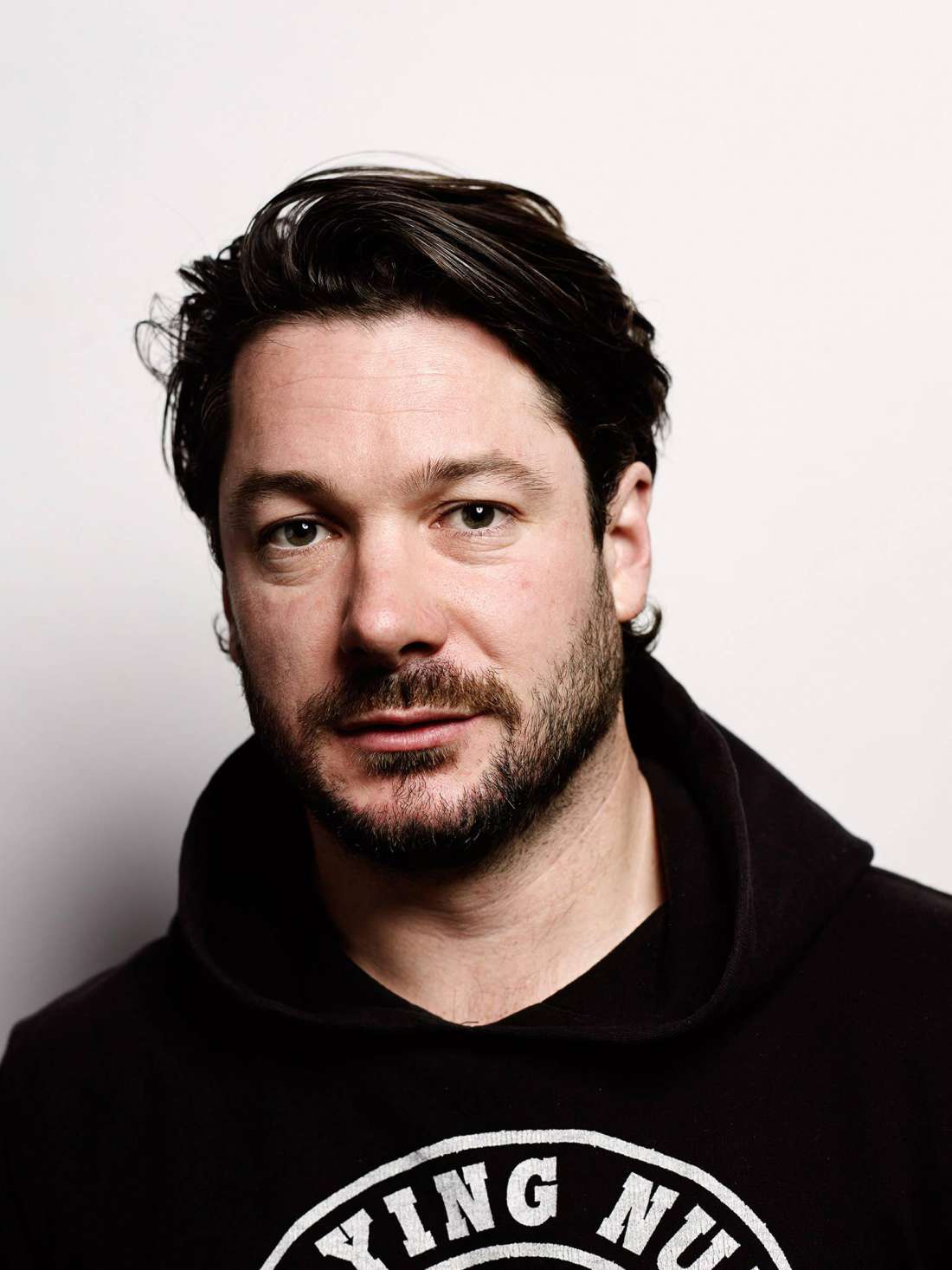
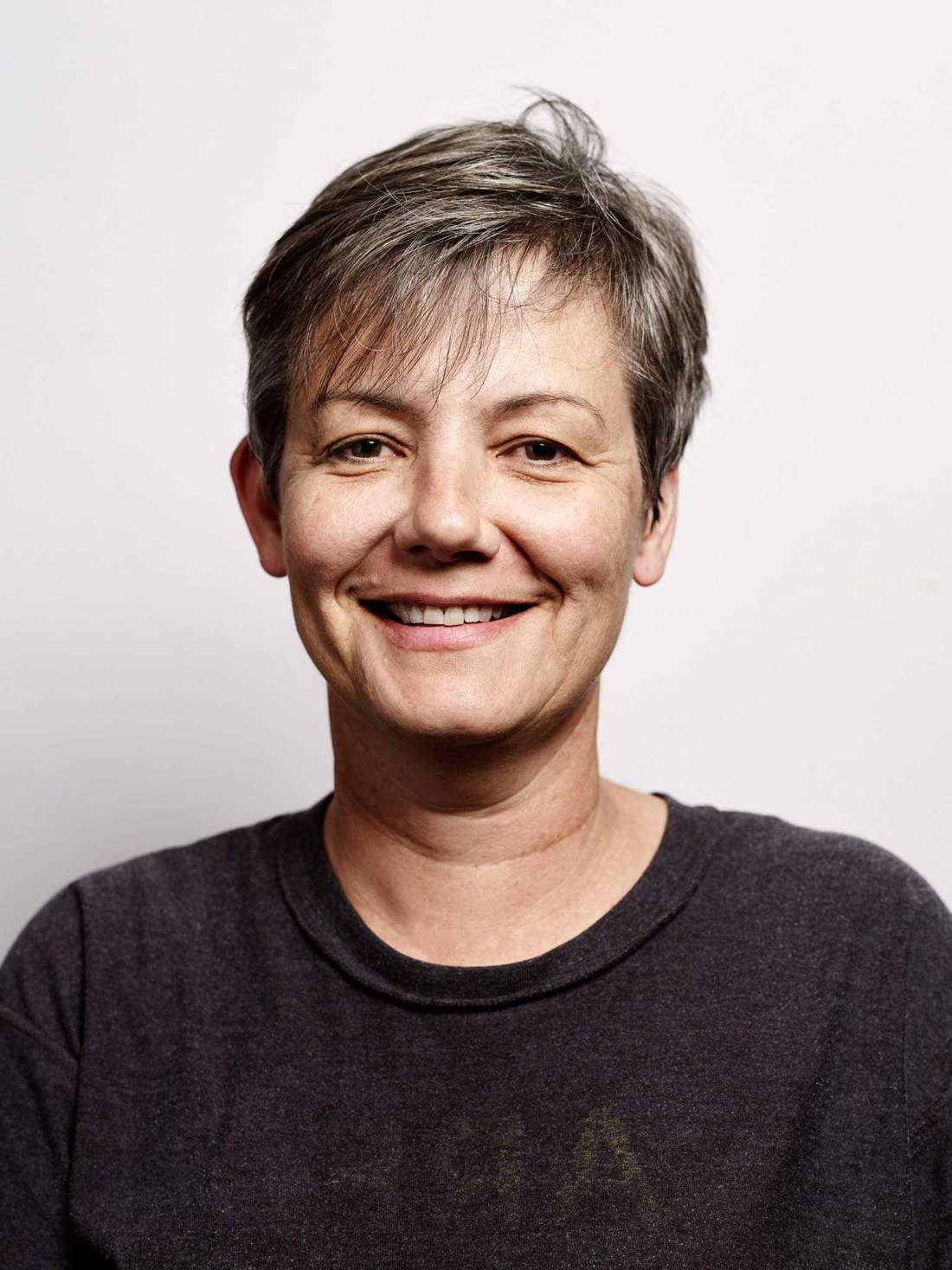
SSS – These projects you work together on sound like a lot of hard work. In spite of that you all still have individual practices?
Yes, we’re all doing our own shows, but being in this collective is great for that because we always have people to talk to. We meet every Monday, Public Share Monday is our gig. And we make things and talk and it seems to be growing… we’ve received quite a lot of invitations to participate in different projects, it now has its own momentum.
SSS – We seem to be seeing a bit of a resurgence of making beyond the arts sphere – re-localised production. Do you think what you’re doing is part of a broader movement?
Possibly, we all do it as core anyway, because we operate within a visual arts context. We are makers. There is some research emerging around how there is less understanding of material making in younger generations, because of the shifts in media, so in some ways it makes sense that this resurgence is happening. In the art world it’s talked about as materiality or new materialism. There is a revisiting though, and definitely a big interest in pottery, or clay. It’s great to see people who’ve worked all their life making pottery having that opportunity available – say to supply restaurants with tableware and for it to be a viable thing, rather than a thing that happens around the edges. We really love it.
Photography: Aaron McLean